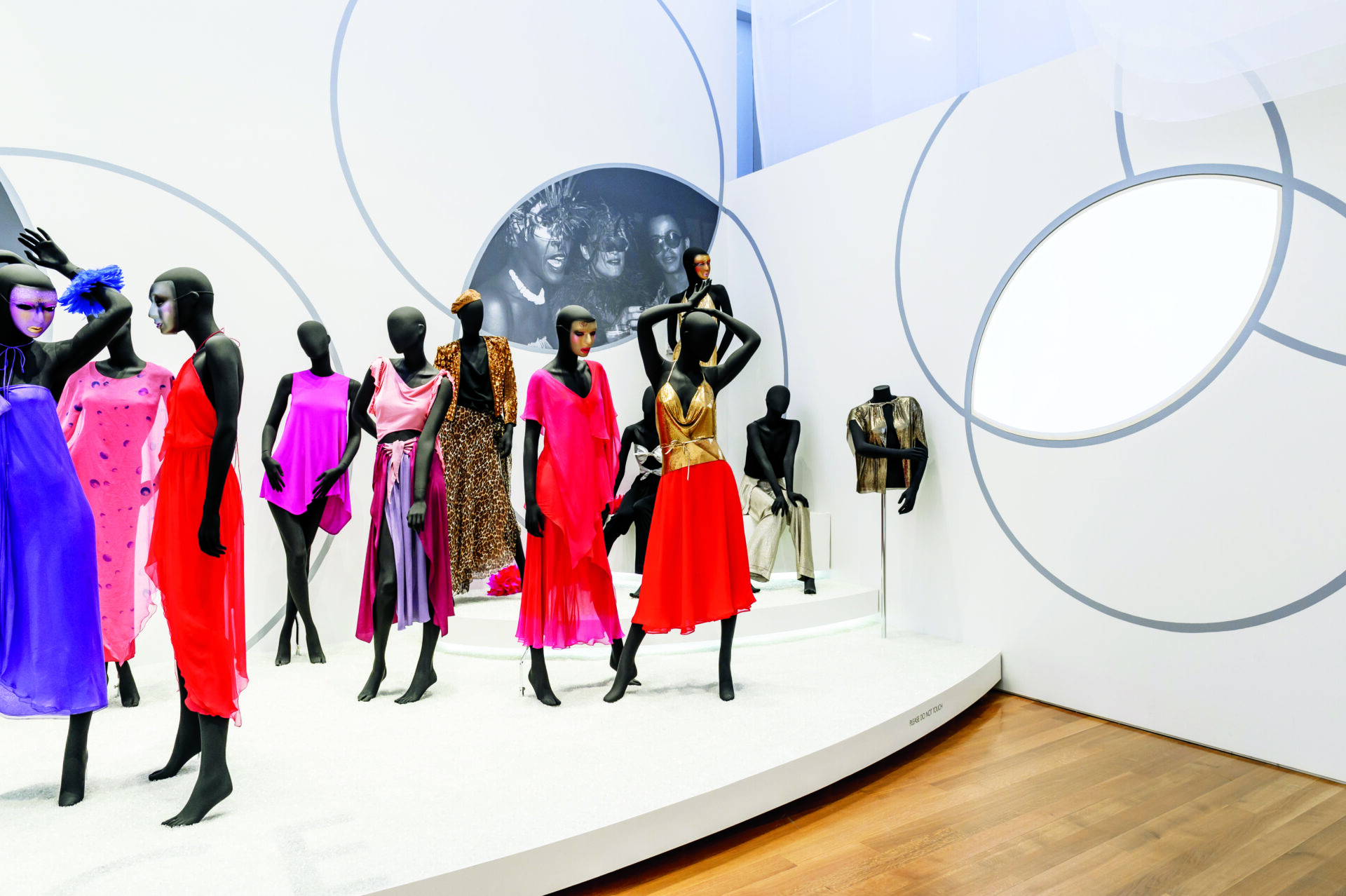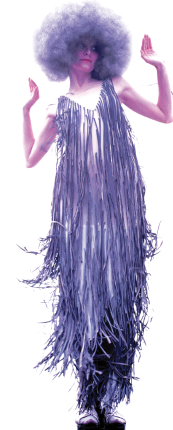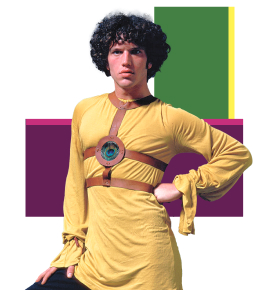IN STEP WITH HIS TIME

STEPHEN BURROWS, Fashion Design ’66, helped define 1970s disco style. In 2013, he was the subject of a retrospective exhibition at the Museum of the City of New York

There’s nothing like a room full of Stephen Burrows designs to make you feel like dancing. Maybe it’s the slinky jerseys, sleek fits, and juxtapositions of hypnotic colors that call to mind disco divas like Grace Jones. This is not an accident: Burrows, the winner of awards from the Coty American Fashion Critics and the CFDA, has always found inspiration in music, particularly “anything from Motown, and girl groups like Sister Sledge and the Pointer Sisters,” he says. (He’s dressed both acts.) Designing for Diana Ross was a career zenith. Miles Davis and Mick Jagger wore him, too. In 2013, the Museum of the City of New York did fashion lovers a favor with a well-named show of Burrows’s work from the ’60s, ’70s, and ’80s: When Fashion Danced. A huge photo of Grace Jones greeted visitors at the gallery entrance.
Although the exhibition focused on Burrows’s heyday, he still has a line, worn by such notables as Chelsea Handler and Oprah. Michelle Obama is also a fan. “She wore my dress twice! I couldn’t believe it,” he says, in his typically modest manner.
Burrows credits his father with introducing him to music. “He made watercolor caricatures of major figures in Harlem nightlife—Billie Holiday, Dinah Washington, Sarah Vaughan—at places like the Renaissance Ballroom. And I would be there, sitting in his lap.” Burrows’s mother inspired his color sense—“She liked coloring books and saturated colors.”
He studied fashion design at FIT from 1964 to 1966 and opened his first boutique, O, opposite legendary nightclub and artist hangout Max’s Kansas City, in 1967. Not long after, filmmaker Joel Schumacher (Ghost), then visual director for Henri Bendel, discovered Burrows and his fashion on Fire Island, and introduced him to Geraldine Stutz, president of Bendel’s. Burrows opened a boutique in the store in 1969, the first African-American designer to do so.
In 1973, his designs were showcased in the legendary “Battle of Versailles,” a fashion show that pitted Paris haute couture against high-end American sportswear. For the first time, critics say, Americans outshone the French. No designer embodied that spontaneous, irreverent moment more than Stephen Burrows. As the fashion scholar and curator Richard Martin wrote, “Burrows was the quintessential fashion expression of the 1970s in a disestablishment sensibility, young nonchalance, and unfailing insistence on looking beautiful.”

Martin also said that Burrows’s color blocking and “lettuce” edging can be “recognized as hallmarks of a truthful, youthful culture that demanded no deceit in dress and a return to basics.”
Hearing that quote, Burrows laughs. “Richard’s so ‘couturial’! He was a really inspiring guy.”
Here, we offer a few more reflections from Burrows, and some of his fabulous fashions.
On his time at FIT:
I met a lot of friends who I still see—Roz Rubinstein, former manager of the O boutique and Stephen Burrows, Inc.; Don Sayers; Frank Leo; and Vy Higginsen. Also my great professors [Margaret] Negro, [Lyena] Dodge, and [Marie] Edelstein—my senior teacher. On the last day of class I said to her, “I’ll see you at the Coty Awards.” I was just being futuristically optimistic. But then I did.


On Miles, Jimi, and Mick wearing his women’s wear:
Miles [Davis] would just wear [his wife, the singer] Betty’s things. (I met her dancing at the Palladium.) And Jimi Hendrix wore his girlfriend’s things. And Mick Jagger wore it because Jerry Hall bought it. I also did tie-dyed shirts and pants. Anyone could wear those. And tunics—they were like a dress but guys wore them.
On jersey:
My partner introduced me to matte jersey in 1969. It doesn’t have any static. It’s natural, nice to feel, and it’s a knit! I have a predilection for knits, because they don’t need a lining and they fit to the body.


On his color sense:
They had at least 30 fabric colors in stock at Jasco, and I’d just put them all together and start grabbing. The clothes were like adult toys, so I liked them bright and humorous.
On his famous “lettuce” edging:
It was a mistake that a sewer made in a sample. I liked it and kept it. I called it lettuce ’cause it looked like lettuce!
On the future:
Hopefully more awareness of my product, and some freestanding stores. Fashion’s all about real estate now.